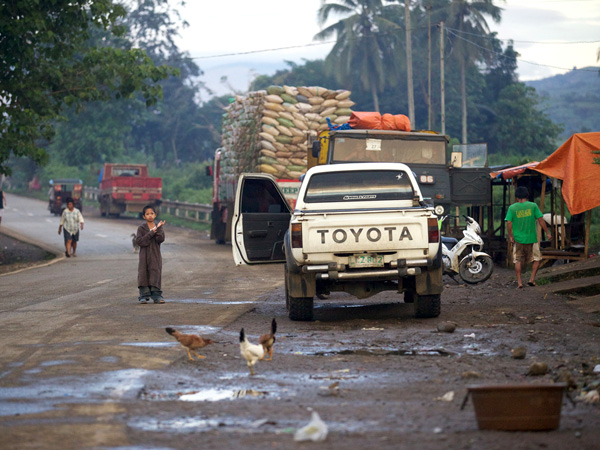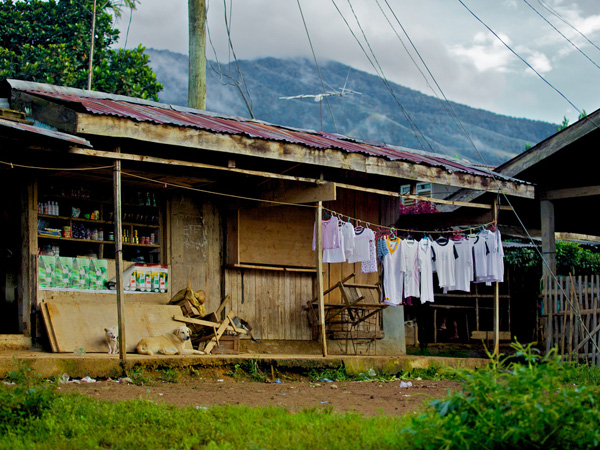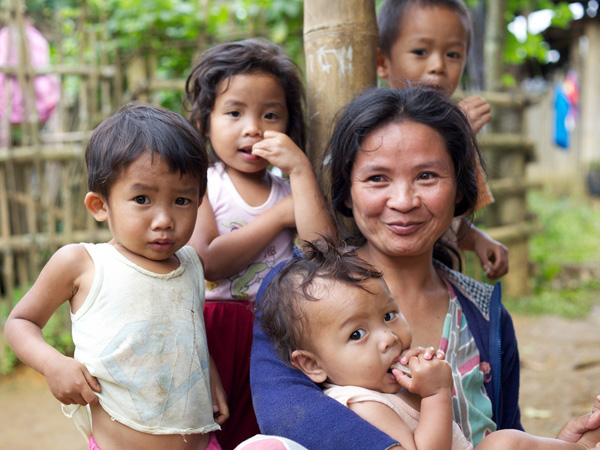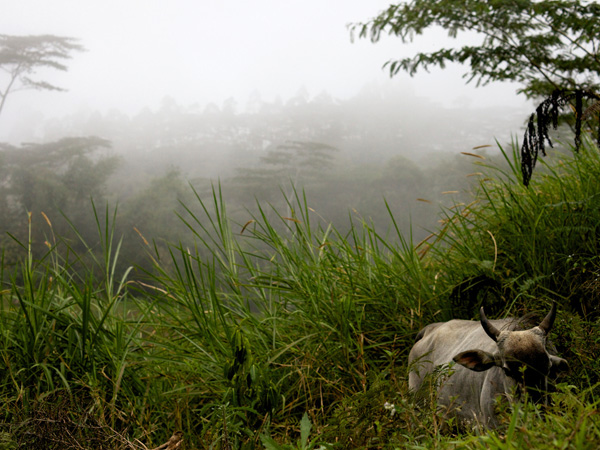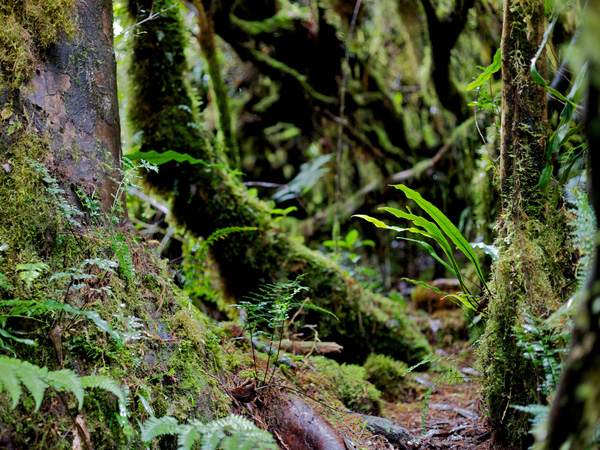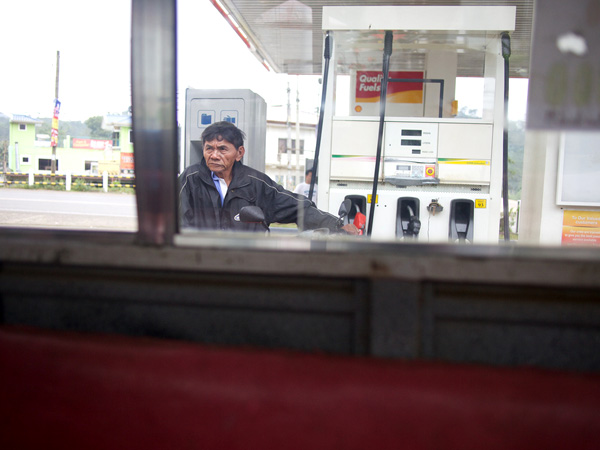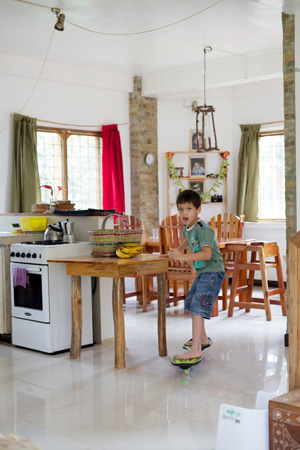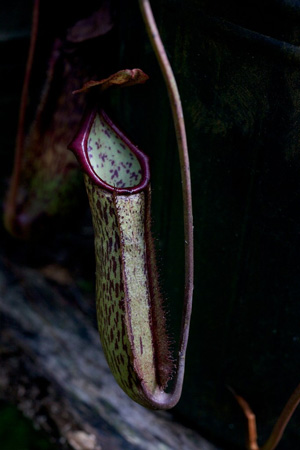Tempting Fate in the Philippines
A trip to MILF Island.
MINDANAO—Filipinos may have an insatiable appetite for American basketball and American-mall chain stores, but I've heard there's one cultural export that gets a cool reception: 30 Rock. After one of the show’s stars, Alec Baldwin, joked about a Filipino mail-order bride on a late-night talk show, a local senator promised to beat the crap out of him. The “EGOT” necklace worn by Tracy Morgan's character allegedly spells out a racist phrase in Tagalog slang. And an episode about a made-up reality show called "MILF Island" could, in theory, be taken as an oblique reference to a bloody regional conflict that's led to the deaths of more than 120,000 Filipinos over the last 40 years.
Having already climbed up and down the country's most active volcano, I'm headed straight to the heart of this unrest—the original MILF Island. Located at the southern end of the Philippine archipelago, Mindanao is home to the majority of the nation's Muslim inhabitants and an assortment of militant groups fighting for self-governance. One of these, Abu Sayyaf, has abducted at least 20 journalists since 2000, and orchestrated a string of bus and airport bombings. (In early January, an Australian English teacher was taken on the island and held for a multi-million-dollar ransom.) Another group, the New People's Army, murders local policemen and otherwise promotes violent Maoist revolution. And the most prominent rebel faction, the heavily-armed, Libya-backed Moro Islamic Liberation Front (MILF), has been training jihadis and fighting off government troops from its jungle base camps for decades.
I'm sure the U.S. government—along with most of my friends and colleagues—would rather I didn't go anywhere near Mindanao. The State Department website suggests that visitors "avoid congregating in public areas," and points out that some tourists take the reasonable precaution of hiring their own security while they're on the island. The U.K. travel advisory is more explicit: "There have been terrorist attacks against civilian targets in Mindanao," it says. "There is also criminal activity in Mindanao, including the use of kidnapping and explosions." Even Jo and Sheen, the mountaineering couple who cheerfully lured me to the top of Mayon, were unnerved by my itinerary.
But the more I read about the Muslim separatists, the less inclined I am to take them seriously. It's their four-letter acronym that clouds my judgment: I learn from the BBC that the U.S. government "is watching the MILF closely," and that for years "the MILF operated openly across large swathes of Mindanao;" a local news source assures me that "the MILF is in the process of negotiating for a peace accord." I'm about to visit an island full of MILFs. How dangerous could it be?
Anyway, it's not like I'm planning to visit the Muslim-controlled parts of the island, nor do I have any intention of congregating in public areas. My goal is simple: to spend a few quiet days in the mountains, staying at a carnivorous plant farm and tourist lodge run by an eccentric German horticulturalist named Volker. It'll be fine, he tells me by email a few weeks before I arrive. It's actually much safer here than in Manila.
***
The farm does feel removed from whatever violence might be lurking elsewhere on the island. Volker's is a quiet, hippie homestead with handmade Adirondack chairs, a treehouse for backpackers, truck-tire lawn furniture, a rainwater Jacuzzi, and a wandering carabao named Carrie who serves as the de facto lawn mower.
"There is a certain unsafeness in the Philippines, but Cambodia is probably worse," Volker declares as we amble through his garden, past beds of dentate flytraps and sticky sundews. "We don't have landmines, which is nice. Especially if you are a botanist."
Volker kicks off his crocs and takes me inside one of the houses that he and his wife Janet have built for themselves and their two small children. As I sip a cup of the worst coffee I've ever had—Volker and Janet grow and roast the beans themselves—we talk about the local tendency toward conflict. "The problem is that people here don't have anger management," he explains.
The family does take some precautions. The farm has an alarm system, and Volker won't let his son walk to school alone. Even so, he assures me that more children are raped or murdered in Germany than in the Philippines. Mindanao is actually the safer place to raise kids, he says without a hint of mischief in his light-blue eyes. Filipinos don't have the "moral sickness" that comes with urbanization and development.
***
In the morning we set off to climb one last mountain, a mossy peak called Dulang-dulang that’s situated next to a dormant volcano. According to the tribal communities nearby, you can pass directly to heaven from its summit, without having to experience the agony of death.
The man who is arranging our trip, a farmer and sustainability advocate named Henry, says there's no reason to fear the agony of death while we're on the trail. Still, we’re told the mountain can be a dangerous place if you don't have the spirits on your side. Would-be trekkers must offer up a pair of chickens to the mountain gods before attempting any climb.
Henry will arrange the ritual with the tribesmen who live on Dulang-dulang. (They will also serve as our guides.) We're supposed to show up with the sacrificial animals and supplementary foodstuffs, so we cram a pair of sorry-looking oven-stuffers into the back of Henry's pickup and set off for the village. The drive takes several hours down the National Highway—a rough, rock-strewn road that travels alongside rubber-tree plantations, spiky-bushed pineapple groves, and fields of sugarcane. Henry demonstrates a facility with the lingo of environmentalist NGOs and spends most of the trip railing against illegal pesticides and corporate farms operated by Dole and Del Monte.
When we arrive at the home of the ritualist, it turns out we've forgotten several key ingredients. There are supposed to be four chickens, not two, so we'll have to fill out the offering table with eggs. We'll also need a few bottles of cheap Chinese wine and several pounds of rice. Then we're asked to pay a ritual fee, to which Henry adds his own ritual negotiation fee, and then another driver fee, as well as a gas fee for the use of the truck. It seems like the more time we spend waiting for the ceremony—and we're waiting forever—the more the price goes up. Henry uses what sounds like another NGO phrase to describe the situation: We have to "monetize the ritual," he keeps saying.

Photograph by Matt Elkind for Slate.
The mustachioed shaman finally arrives, wearing a white cloth around his head and an embroidered shirt with a blood-stained sleeve. We watch from a bench as he lifts one of the chickens and exposes its bald, pink rump. Then he spits on it—a great, big, magical loogie—and mutters an incantation while drawing his machete across its neck. Blood drizzles over the dish of eggs and decorates them with steaming stripes.
Henry narrates the ritual for us with a series of shamanistic platitudes: The spirits have accepted our offering, they will guide us and protect us as we climb the mountain, etc. I find it difficult to pay attention. The slow-motion slaughter leaves my eyes wet and my stomach churning. I wasn’t nearly as affected by the cockfights in Manila, which had a cruel, sporting logic that I could at least begin to understand. But this ceremony, done solely for the benefit of some imaginary beings, makes no sense to me. After a while I turn away, and fixate on a poster tacked up above the bloody table. It shows an assortment of dogs and cats in a grassy field decorated with flowers and jewelry. There's a trio of kittens tucked into a tiny bed, and what looks like a Golden Retriever in a shirt and tie, holding a long-stemmed rose between its teeth. At the bottom of the image it says, "PUPPIES & FRIENDS."
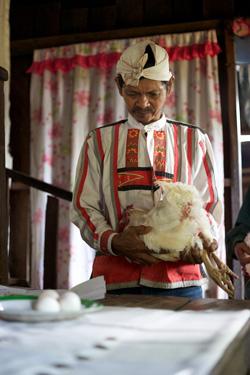
Photograph by Matt Elkind for Slate.
"One deity rules over all the other spirits," Henry tells me as the sacrificial chickens are plucked and tossed into a hot caldero. "He is the Godfather." I get the sense that we're making offerings so this all-powerful being won't call out a hit on us when we climb the mountain. Indeed, the whole ceremony feels like a spiritual protection racket: You seem like a nice bunch of tourists … gosh, it'd be a real shame if you got eaten by a tree sprite. By the time it's over, I'm desperate to get out on the trail.
Three of the villagers, teenaged boys, lead us up a steep road and into the mountain forest. It's a two-day trip, and I count several distinct climatic zones as we work our way toward the summit. First, we're in a mossy forest covered with ferns and orchids; then we arrive in an even mossier forest covered with ferns and orchids; and finally, we hike into a forest so mossy that any ferns and orchids that might be around are buried in deep green fuzz. I've never seen so much moss in my life—soft piles of it hang from the trees and sweep across the misty floor. Even the moss is growing over with moss.
A mystical quiet falls over us as we pad our way through the moss-scape—our trek does seem kind of spiritual, after all. The spell is broken when one of the teenagers, Dudong, starts practicing his English. "Hello, how are you? Are you ready to die?” he asks, then repeats the phrase again and again. “Hello, how are you? Are you ready to die? … Hello, how are you? Are you ready to die?"
***
My photographer Matt and I spend our final night together in the Philippines at Volker's guesthouse—a polished A-frame with a couple of beds, a flat-screen television, and a large stack of pirated DVDs. This is where Volker's octogenarian mother stays when she makes her yearly visit from Germany. On the kitchen table there's a vase filled with pitcher plants from the garden—their leaves elaborated into red-streaked vessels with flip-top lids. When the pitchers mature, the lids pop open, forming a slippery trap for termites, mosquitoes, and other insects. I see a few sectioned bodies squirming in the digestive fluids inside.
Thousands more bug-eaters are planted around the farm, but their swarming prey are undiminished. The light-switches in the guesthouse sizzle with frying bugs when we flick them on, and our bathroom is quickly overrun with ants: There's a vortex of them around the shower drain, and another regiment marching thickly, two or three abreast, along the edge of the toilet. The ants are so plentiful that when we're touring the farm later that day, Matt literally gets some in his pants.
I'm surprised to learn there are some chicken farmers on Volker's client list; they're hoping the plants will help with pest control. It seems like a foolish plan. What incentive does a pitcher have to gobble up every fly? A plant that got too greedy would soon find itself with nothing to digest.
Volker tells me about one species, Nepenthes bicalcarata, that maintains its food supply by holding out for an occasional, gluttonous feast. Most pitchers have a sheet of wax crystals plastered along their inside walls, so it's hard for insects to maintain a grip. That's a good way to catch whatever bugs happen to wander by, but N. bicalcarata isn't interested in bite-sized snacks. If it lets a foraging ant escape instead, and return to its colony with a droplet of nectar, then more bugs—lots, lots more—will soon be on the way.
According to one study, only about one in 50 ants that approach N. bicalcarata under normal, dry conditions end up plunging into its digestive enzymes. But when the pitcher is moistened with rain or dew, a slippery film forms along its microscopic ridges, and the ants that wandered freely along its lip now slide in by the dozen—the plant captures and digests 40 of every 50 that arrive. For the ants, this is a kind of gambling—a seductive balance of risk and reward.
As Volker walks me through the garden, holding a few of the ribbed pitchers open so I can peer over the rim, I think of the volcanoes I've seen, holding pools of magma deep inside. For years or decades or centuries they offer no danger at all, just nectar and green earth—until one day a fountain of lava moistens the landscape, and the people who've built their homes there scatter like bugs.
Why would anyone live near a volcano? In the years after a mountain erupts, its slopes become more fertile, drawing people back toward the crater during periods of quiescence. Then it explodes again, and the cycle of boom and bust renews. Like the two weeks I’ve spent in the Philippines, second-guessing all of my decisions and wondering if I'll ever make it home, life near the volcanoes is a casino game. Like ants on a pitcher plant, we're all just playing the odds.

